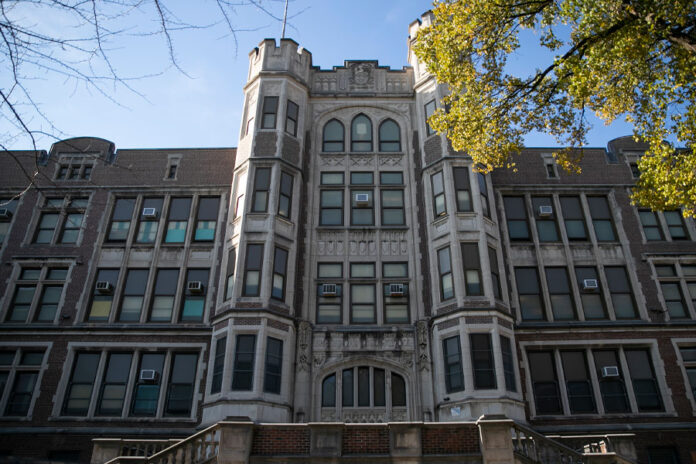PHILADELPHIA – The School District of Philadelphia has embarked on a $19.9 million investment to reopen Frankford High School. Students and staff will return to an improved learning environment in their beloved building for the 2025-26 school year.
The reopening plan will address damaged asbestos and improve and refresh the main portion of the 108-year-old building from the ground to the fourth floor. The main part of the school has been closed since April 2023 due to asbestos concerns.
“Frankford has been an important and historic center for learning for more than a century in Philadelphia, and we are confident this investment will enable us to safely reopen the building to students and staff,” Chief Operating Officer Oz Hill said. “We are grateful for the patience and cooperation of the Frankford community and are working cooperatively with school leadership and meeting every quarter to provide updates on our progress.”
Currently, Frankford students grades 10-12 are learning in a reconfigured space in the D-wing of the building, which has been sealed off from the main portion, while ninth graders are at Roberto Clemente. This education plan will continue through next school year, and the D wing will remain fully isolated from the main building during remaining construction.
The work to reopen has started with the imaging of the building, to photograph and document all of the current spaces, without disturbing materials.
The asbestos abatement, which will involve some repair, removal, and enclosure, will begin once the current school year ends. All asbestos abatement work will be done during the summer or after school hours when no students and staff are in the building.
The plan to address the environmental concerns and improve the building includes:
- Removal of plaster ceiling in corridor and classrooms
- Enclosure of asbestos materials, including installing laminate panels over plaster walls in corridors and classrooms. Unlike sheetrock, this material is easy to clean, and resistant to damage and was used in the District’s newest school, TM Peirce.
- Removal of vinyl asbestos tile (VAT) floor tile in the basement
Once the asbestos work is completed, the building will be refreshed with new ceilings in corridors and classrooms and LED energy efficient light fixtures. All corridors and classrooms will be painted. Existing wood floors will be refinished and new vinyl tile flooring will replace existing tiles in the cafeteria spaces on the ground floor.
The District weighed several options in developing a plan to serve the Frankford community. These options considered the extent of work necessary to be able to reopen and maintain a healthy learning environment, the storied history of the facility, and the budget constraints and balancing needs of the District as a whole. A full demolition and new construction would have exceeded $300 million and taken many years, and gutting the building and rebuilding from the inside likewise would have taken years and was prohibitively expensive at more than $160 million. The plan developed with the investment of nearly $20 million from Capital funds enables the environmental abatement and significant improvements and will allow students and staff to return to their building in the 2025-26 school year.
Once reopened, the District will continue to work to maintain and improve conditions at Frankford. Its HVAC system could not be included in the current work due to funding constraints, and replacement remains a priority for the District.
Though much of the asbestos-containing materials in Frankford will be removed or enclosed during this project, some asbestos containing material will remain in the building. The presence of asbestos itself is not a health hazard; it is when it becomes airborne that it can be a concern. Frankford will undergo twice-yearly inspection to check on the condition of asbestos materials so they can be maintained in good condition.
In the past two years, the District has invested tens of millions of dollars to improve its asbestos management program – and the result has been the maintaining of healthier spaces because of the identification of areas where asbestos damage needed to be addressed







